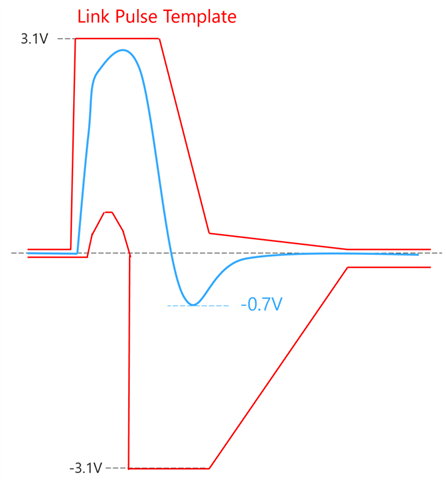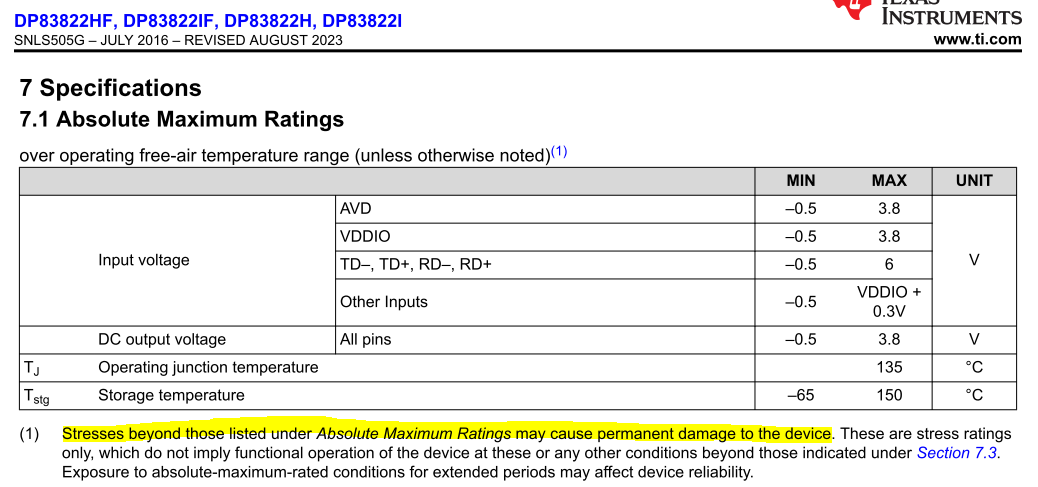Tool/software:
Hello,
I would like to ask a general question about Ethernet PHY use case.
Generally, desktop computers are turned off without unplugging the LAN cable. (Link partner : Router/Switching HUB is powered up, but, the computer itself using the PHY is power off.)
In this situation, Ethernet PHY in this computer continuously receive NLP/FLP which could have undershoot below the Absolute Maximum Rating described in the datasheet.
Undershoot may depend on board design, however, I can find some waveform which is exceeding -0.5V in E2E.
Since the device is receiving the voltage which exceeds the Absolute Maximum Rating, I am thinking that the device could be damaged.
<Question1>
Is TI device designed to withstand such use case ?
Most of the device seems to have Absolute Maximum Rating MIN as -0.3V or -0.5V for MDI pins.
<Question2>
Is it not recommended to connect the LAN cable before the system (PHY) power up ?
Best Regards,
Kawai




